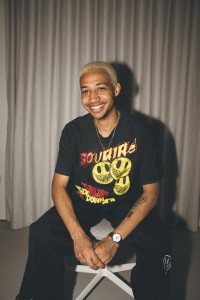A New Role for Media Agencies
200 Zeichen Lorem ipsum dolor sit amet, consectetuer adipiscing elit. Aenean commodo ligula eget dolor. Aenean massa. Cum sociis natoque penatibus et magnis dis parturient montes, nascetur ridiculus mus. Donec quu.
Kim Notz
06. August 2024
A large part of agencies’ very reason for being lies in their ability to constantly reinvent themselves. Markets, clients, consumers, and technology are always evolving—and in doing so, they create space for innovative agencies. Marketing today faces growing pressure from rising complexity, increasingly fragmented channels and audiences, the expanding role of technology, and an ever-faster pace.
All of this is reflected in the agency landscape and raises an important question for marketing leaders: what is the right agency setup? In the past, the question was simply: who is the lead agency? And the answer was often: a creative agency. Creativity is still important today, but it now has to be placed in the right context—namely, data-driven marketing. Those who control the martech systems, and thus the data, have the upper hand.
That gives media agencies a key role. They sit on a treasure trove of data that, in theory, should belong to the advertisers themselves—if only they had the capabilities to unlock it. Agencies and consultants can help do just that, creating a numbers-based foundation for marketing. On top of this foundation, everyone involved can then build. Or, as Jim Barksdale, the former CEO of Netscape, famously put it: “If we have data, let’s look at data. If all we have are opinions, let’s go with mine.”
„If we have data, let’s look at data. If all we have are opinions, let’s go with mine.“
This explains why media agencies today no longer live solely from their old core business of buying, placing, and optimizing advertising space. Their business models now also include consulting—properly valued and billed as such—as well as technology: adtech, martech, retail media, and holistic communications consulting.
For Lena-Marie Hesse, Chief Client Officer at Publicis Media and my guest in episode #117, the old core business nevertheless remains a key topic.
The Question of the Modus Operandi
As Lena-Marie argues, media delivery still ultimately has to reach the consumer. With the hyperfragmentation of channels, that task has only become more difficult—especially in video, which remains one of the most effective, efficient, impactful, and attention-grabbing formats we have. For many products, broad reach will continue to be essential to drive sales—even as budgets fail to grow.
At the same time, media agencies can also differentiate themselves through data-driven and technological solutions. The focus here is on improving delivery, aggregating channels during distribution, and ensuring in media planning that it’s clearly defined which consumer receives which message, in which format, through which channel, and how often. This still involves targeting and personalization—but no longer in the crude, rough-edged way of the early days.
Lorem ipsum dolor sit amet, adipiscing elit.
Alongside classic sociodemographics, behavioral targeting and mindset-based targeting now play a major role in the media mix. Approaching audiences through their mindset opens up new opportunities for personalization—especially when combined with AI-driven production capabilities. At this point, collaboration with creative agencies inevitably becomes an issue, raising the question of the right modus operandi.
Here, Lena-Marie is convinced, you need a guiding instance that leads and coordinates the process. It’s no longer the traditional lead agency, but rather a “connection lead”—the owner of clearly defined ways of working. In her view, media agencies are best positioned for this role, because they operate continuously, whereas other agencies often handle only sub-projects or partial deliverables.
In practice, workflows and processes vary. Publicis has its own, but also develops client-specific approaches—or adapts to processes brought in by other agencies. It starts with defining procedures, ground rules, and regular meetings to share key insights. The goal is to bring together the right mix of qualitative and quantitative insights.
The Operating System of Advertising
Once the brand platform has been developed, all stakeholders should come together to assess how well it works across different contexts and channels. Around the table, alongside media and creative agencies, you’ll often find specialists in performance, retail, or social. Each brings a distinct perspective, and everyone benefits from the exchange and the regular sharing of learnings—even during the course of a campaign.
Here, Publicis’s so-called Operating System comes into play: a data-driven platform that increases transparency for all stakeholders. Where does campaign planning stand? What insights have we gained? How is a live campaign developing over time? And how is it resonating with people in the market? Those are questions that creative agencies, too, find highly relevant.
The ultimate goal is to make marketing more manageable and process-oriented—across the entire journey from activation to measurement and reporting. At the same time, retail and marketing are converging more closely through commerce, D2C, and retail media. It’s also about better orchestrating paid and earned media and approaching it all through the lens of the customer journey—to create a more relevant and more engaging communication experience.
Lorem ipsum dolor sit amet, adipiscing elit.
This can also mean reducing paid measures in favor of owned media—with the right content and the right touchpoints. The overall system can then operate far more efficiently than paid media alone ever could—provided the influence of the different touchpoints and their interplay can be measured.
Given the increasing fragmentation of the landscape, there’s no alternative but close collaboration between creative, content, and media—supported by data and technology—to build an effective and efficient contact path for consumers. What we need to design and develop are ecosystems made up of marketing, agencies, media channels, technology, and consumers.
Christmas Always Comes So Suddenly
Ecosystems like these don’t emerge overnight, and despite the pace of change, a medium- and long-term perspective is essential. Creative agencies, too, appreciate predictability—and at least seasonality can be planned: Christmas, spring, and summer reliably return each year, bringing seasonal campaigns with them. In return, what Lena-Marie would like to see from creative agencies are long-term brand platforms that work flexibly across many channels and are not still overly one-dimensional in their thinking—campaigns such as “Weil’s um mehr als Geld geht” for Sparkasse or “Bitte” for Bitburger.
Complexity and technology are also transforming the KPI discussion. Classic media outputs—reach, click-through rate, CPC—are giving way to marketing KPIs, which in turn are tied to business KPIs. The process now works backwards: starting from business KPIs, developing marketing KPIs, and from there building media and communications strategies with the right touchpoints. The advantage for media agencies is that they can also quantify the success of these measures.
Lorem ipsum dolor sit amet, adipiscing elit.
In this way, target group segments can be built around the different stages of the customer journey, allowing potential to be identified and communication planning to be derived—without losing sight of the qualitative dimension. What moves people? What mindset do they have? How do they feel about the brand? What barriers exist—and what triggers? This also raises the question of how often these KPIs really need to be measured. Some shift quickly and provide signals for how to adjust a live campaign. Others change only slowly and therefore don’t need to be tracked on a weekly basis.
It’s all part of a system and a process—long-term in nature—that improves with every iteration and demonstrates the advantage for everyone involved, agencies as well as clients: better campaigns with better results not only help the client but also reflect positively on every agency at the table. After all, we all enter the room with the same promise: to support the client’s growth. And having such a system in place makes that possible.
Find more here:
Kontakt





